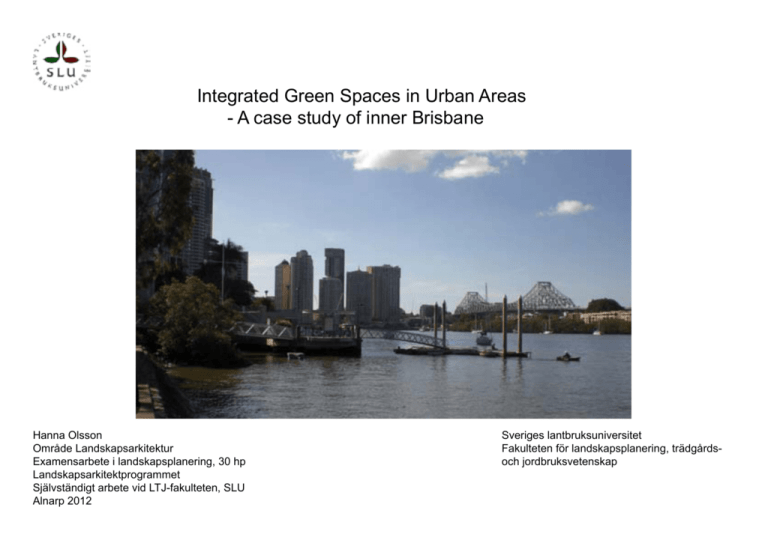How Does Architecture Integrate Principles Of Urban Green Spaces And Ecology?

Living in urban areas can be exhausting, and it's essential to have integrated green spaces to provide an eco-friendly environment and combat negative urban factors. Green spaces consist of natural environments like trees, plants, and other vegetation that can improve the quality of life in a city.
The concept of an integrated green space is essential to creating sustainable communities. Therefore, city planners must integrate nature, environment, and people to create urban areas that meet the needs of the next generation. This post highlights the importance of integrated green spaces in urban areas, how they improve our quality of life, and why it's essential to preserve these spaces.
Health Benefits of Green Spaces
One of the most obvious benefits of green spaces is the effect they have on your health. A study conducted by Harvard University found that people who reside in a greener environment have a lower mortality risk than those living in concrete environments. Green areas also improve air quality and alleviate respiratory problems.
Green areas are also helpful for exercise as they provide opportunities for walking, running, and other physical activity. Regular physical activity is proven to reduce the risk of chronic diseases, including high blood pressure, heart disease, stroke, and obesity. Therefore, the presence of green spaces in urban areas is essential in maintaining a healthy lifestyle.
Another health benefit of green spaces is their positive effect on mental health. The prevalence of mental health disorders is rising, with one in four people experiencing some form of mental health problem worldwide. The incorporation of green spaces in urban areas can help prevent and treat mental health conditions like anxiety, depression, and stress. Nature and green spaces promote relaxation and calmness, reducing levels of cortisol, the hormone associated with stress.
Environmental Benefits of Green Spaces
Green spaces not only improve human health but also provide various environmental benefits to the immediate ecosystem. They help to maintain a balance in the ecosystem by protecting water sources, reducing sediment runoff, and preventing soil erosion. In urban areas where there's little green space, there is the risk of "heat islands," where temperatures are higher than surrounding rural areas, increasing energy costs and the urban heat island effect. The cooling effect provided by green spaces mitigates the heat island effect and thus significantly decreases the use of air conditioning and other cooling devices, reducing energy costs and greenhouse gas emissions.
Green spaces also contribute to the reduction of the urban carbon footprint. Plants absorb carbon dioxide in the process of photosynthesis, reducing the amount of carbon dioxide in the atmosphere, and maintaining air quality. They also act as carbon sinks and sequester carbon from the atmosphere, which makes them an essential part of efforts to mitigate climate change.
Social and Economic Benefits of Green Spaces
Green spaces provide social and economic benefits to a community, and urban areas that lack green areas have a higher chance of social disparity and inequality. Studies indicate that urban areas with green spaces have lower crime rates than those without. This can be attributed to the fact that green spaces provide public gathering areas and behavioral health benefits, such as stress relief, that contribute to a decrease in crime and violence.
Green spaces also contribute to tourism revenues. Urban areas that integrate green spaces with recreational facilities such as bike trails, parks, and gardens can attract tourists who seek scenic environments for leisure activities. The economic benefit of green spaces can be seen in property values. Properties near green spaces are more attractive to potential buyers, and thus their value increases.
Conclusion
The significance of integrated green spaces in urban areas can't be overstated. These spaces play an essential role in maintaining social, economic, and environmental balances while improving human life in both health and relaxed mental states. It's vital to preserve green spaces through sustainable initiatives and thus provide healthy, enjoyable, eco-friendly, and sustainable environments for future generations.
FAQ:
What is an integrated green space?
An integrated green space is a natural environment in an urban area that provides a sustainable living environment. It combines nature, environment, and people in a way that meets the needs of the next generation.
What are the health benefits of green spaces?
Green spaces have a variety of health benefits including reducing the risk of chronic disease, improving air quality, and promoting physical activity. Green spaces can also improve mental health, promoting relaxation and alleviating anxiety, stress, and depression.
What are the environmental benefits of green spaces?
Green spaces help to maintain a balance in the ecosystem by protecting water sources, reducing sediment runoff, and preventing soil erosion. They also mitigate the urban heat island effect and sequester carbon from the atmosphere, contributing to efforts to reduce the carbon footprint.
What are the social and economic benefits of green spaces?
Green spaces contribute to reducing social disparities and inequality while providing public gathering areas and behavioral health benefits such as stress relief, contributing to a decrease in crime and violence. They are also attractive to tourists, generating revenue, and increasing property values in the surrounding area.




Post a Comment for "How Does Architecture Integrate Principles Of Urban Green Spaces And Ecology?"